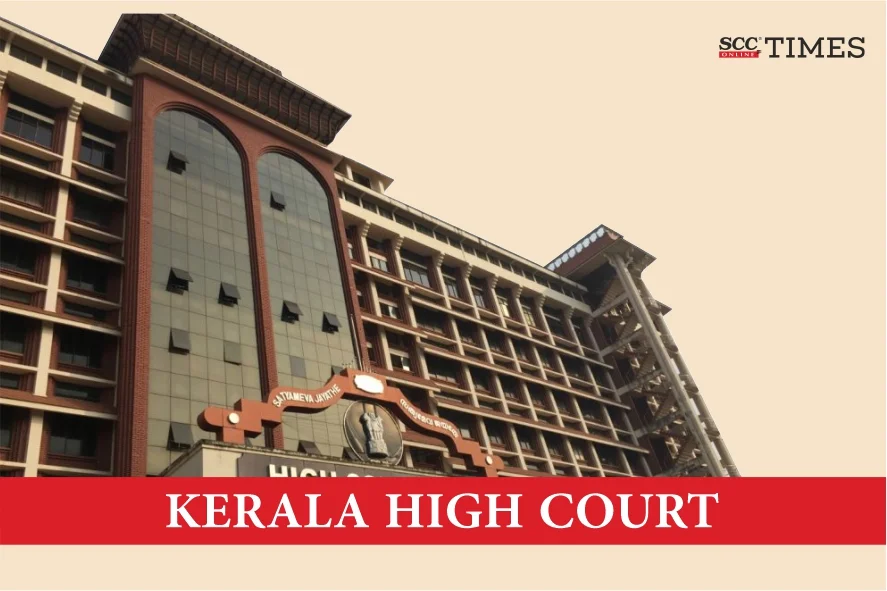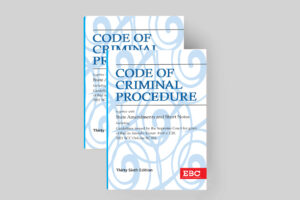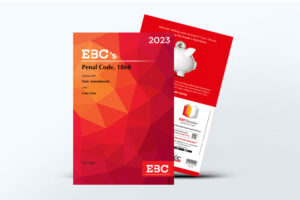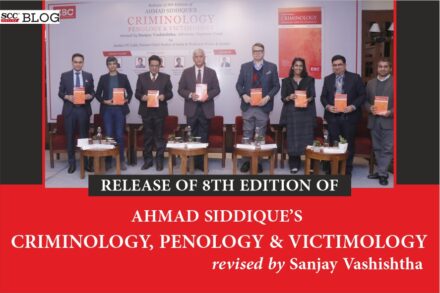Kerala High Court: In a criminal appeal filed by the convict challenging his conviction and sentence imposed under Sections 3021, 376-A2 and 2013 IPC, the division bench of Raja Vijayaraghavan V and P. V. Balakrishnan*, JJ., held that the report of an expert obtained under Section 2934 of the Code of Criminal Procedure, 1973 (‘CrPC’) cannot be considered as a substitute for a certificate under Section 65-B of the Evidence Act, 1872 which is used to prove the validity of electronic evidence. The admissibility of a Section 293 CrPC report simply means that the report can be read as evidence of its contents, but it does not automatically validate any attached electronic media. Therefore, while the expert’s statement may be authoritative, it is not equivalent to the statutory certificate that authorizes the court to treat the DVD as evidence of the video’s contents. Hence, the Court set aside the conviction and sentence of the convict and remanded the case to the Trial Court for the purpose of adducing the electronic records available in the case, as per law.
Background
The prosecution’s case was that, in 2019, the convict, with an intention to commit rape and murder of deceased victim dragged her to the courtyard of ‘Indraprastha hotel’ situated in Perumbavoor. Thereafter, when the deceased resisted the attempts of the convict, he took a hoe and hacked into her face causing injuries. Then, the convict laid the victim on the ground, disrobed her and committed rape upon her. Thereafter, the convict again inflicted injuries on the head, face and other parts of the body of the victim using the very same hoe, resulting in the infliction of further injuries, and the deceased ultimately succumbed to her injuries. Later, the convict also damaged a CCTV camera placed in the place of occurrence, which had captured the events. Hence, the prosecution alleged that the convict committed the offences punishable under Sections 302, 376-A and 201 IPC.
The Trial Court found the convict guilty and convicted him under Sections 302, 376-A, and 201 of the IPC. The convict was sentenced to life imprisonment and fined Rs. 50,000 under Section 302 IPC. In default of payment, he was to undergo rigorous imprisonment for four months. Similarly, he was sentenced to life imprisonment and fined Rs. 50,000 under Section 376-A IPC, with a default sentence of four months’ rigorous imprisonment. Additionally, the convict was sentenced to five years of rigorous imprisonment and fined Rs. 10,000 under Section 201 IPC, with a default sentence of two months’ rigorous imprisonment.
Issues, Analysis and Decision
Whether the cause of death of the victim was homicidal or not?
The Court noted that the doctor’s evidence revealed the victim had suffered 32 ante-mortem injuries, some of which were fatal and sufficient, in the ordinary course of nature, to cause death. The doctor categorically opined that the cause of death was the head injuries, which were the fatal injuries. In light of this evidence, the Court concluded that the victim’s death was a result of homicide.
Whether it is the convict who has committed the rape and murder of deceased?
The Court noted that there were no eyewitnesses to the incident. The prosecution primarily relied on visuals collected from a CCTV camera located near the scene of the crime to implicate the convict. The Digital Video Recorder (‘DVR’) of the CCTV was seized by the investigating officer and presented before the court. A mirror image, allegedly copied to a DVD from the hard disk in the DVR, was played before the Trial Court to facilitate the identification of the convict by witnesses. However, the original document/primary evidence, which was available, was not brought into evidence during the trial, for reasons best known to the Trial Court and the prosecution.
The Court further observed that there was no Section 65B5 certification for either of the DVDs. Additionally, there was no information on record regarding the fate of the DVD that was initially produced and played in the presence of the witnesses.
After discussing the settled principles of law laid down by the Supreme Court regarding the admissibility and appreciation of electronic records/evidence, the Court concluded that the DVDs, in which the electronic record (video clipping) was extracted from the DVR and which have been played in the court and relied on, being secondary evidence of the electronic record, requires certification under Section 65B in order to admit the document in evidence. Thus, without Section 65B certification, there is no question of the DVDs being admitted in evidence and relied upon. There is no exemption granted in law to any authority including the Forensic Science Laboratories from not complying with the requirement of certification under Section 65B, while making copies from the original electronic record.
Further, the Court clarified that an expert’s report cannot be considered a formal substitute for a Section 65B(4) certificate under the law, as they serve two distinct purposes. A Section 65B certificate is a specific statutory requirement to make a secondary electronic record admissible as evidence, whereas a Section 293 report under CrPC is evidentiary material in its own right, typically presenting the results of forensic analysis. The admissibility of a Section 293 CrPC report simply means that the report can be read as evidence of its contents, but it does not automatically validate any attached electronic media. Therefore, while the expert’s statement may be authoritative, it is not equivalent to the statutory certificate that authorizes the court to treat the DVD as evidence of the video’s contents.
The Court remarked that “we are at a loss to understand why the prosecution and the Trial Court had forgone the primary evidence available and have made attempts to rely upon secondary evidence and that too, without proper certification”.
Hence, the Court concluded that no reliance could be placed on the secondary evidence in the form of DVDs, the contents of which had been relied upon by the Trial Court for convicting the convict.
The Court stated that the facts and circumstances discussed reflect a grave truth, which is not easy to comprehend, that both the prosecution and the Trial Court have appallingly failed in their duties to uphold justice. The original electronic record, which is primary evidence and was readily available before the court, was omitted from being presented as evidence. Instead, a copy of the electronic record extracted from the original DVR was introduced without proper certification to make it admissible. For reasons that remain unclear or perhaps due to a misconception, the prosecution failed to present material evidence to substantiate the charge, resulting in a failure of justice. Thus, no fair trial was conducted in this case, thereby causing prejudice to both the victim and the convict.
The Court reiterated that while a case ordered to be retried was generally considered a de novo trial, the Appellate Court was not precluded from directing the use of evidence already recorded. The Court could also proceed to record additional evidence and dispose of the case accordingly.6
The Court concluded that, keeping in mind the aforementioned principles and the facts and circumstances of the case, including the fact that proper evidence, which was readily available before the Trial Court, was not adduced, and considering that no prejudice would be caused to the convict, as he had already been served with a copy of the DVD, it was of the view that this was a fit case where, after setting aside the conviction and sentence passed against the convict, the matter could be remanded for adducing further evidence relating to the electronic records in a proper format, in light of the discussions made earlier.
The Court clarified that it would be open to the Trial Court to recall any witnesses or summon documents for this purpose, and the convict would also be entitled to adduce evidence in his favor at the appropriate stage. The Trial Court was directed to decide the case based on the evidence already on record and the additional evidence that would be recorded thereafter.
In the result, this appeal was allowed in part as follows:
-
The conviction and sentence passed against the convict under Sections 302, 376-A, and 201 IPC by the Special Court of Sessions were set aside.
-
The case was remanded to the Trial Court for the purpose of adducing the electronic records available in the case, as per law.
-
The Trial Court was directed, if required, to recall any witnesses, summon any documents, take an additional Section 313 CrPC statement, and grant an opportunity to the convict to adduce further evidence.
-
Considering that the convict was still incarcerated, the Sessions Judge was directed to make every effort to dispose of the case as expeditiously as possible.
[Umer Ali v. State of Kerala, 2025 SCC OnLine Ker 1775, decided on 24-03-2025]
*Judgment Authored by: Justice P.V.Balakrishnan
Advocates who appeared in this case :
For Appellant: P. Mohamed Sabah, Libin Stanley, Saipooja, Sadik Ismayil, R.Gayathri, M.Mahin Hamza, Alwin Joseph
For Respondent: Public Prosecutor Neema T.V
Buy Code of Criminal Procedure, 1973 HERE
Buy Penal Code, 1860 HERE
1. Section 103 of Bharatiya Nyaya Sanhita (‘BNS’), 2023.
4. Section 329 of Bharatiya Nagarik Suraksha Sanhita (‘BNSS’), 2023.
5. Section 63 of Bharatiya Sakshya Adhiniyam (‘BSA’), 2023
6. Satyajit Banerjee v. State of West Bengal, (2005) 1 SCC 115.








